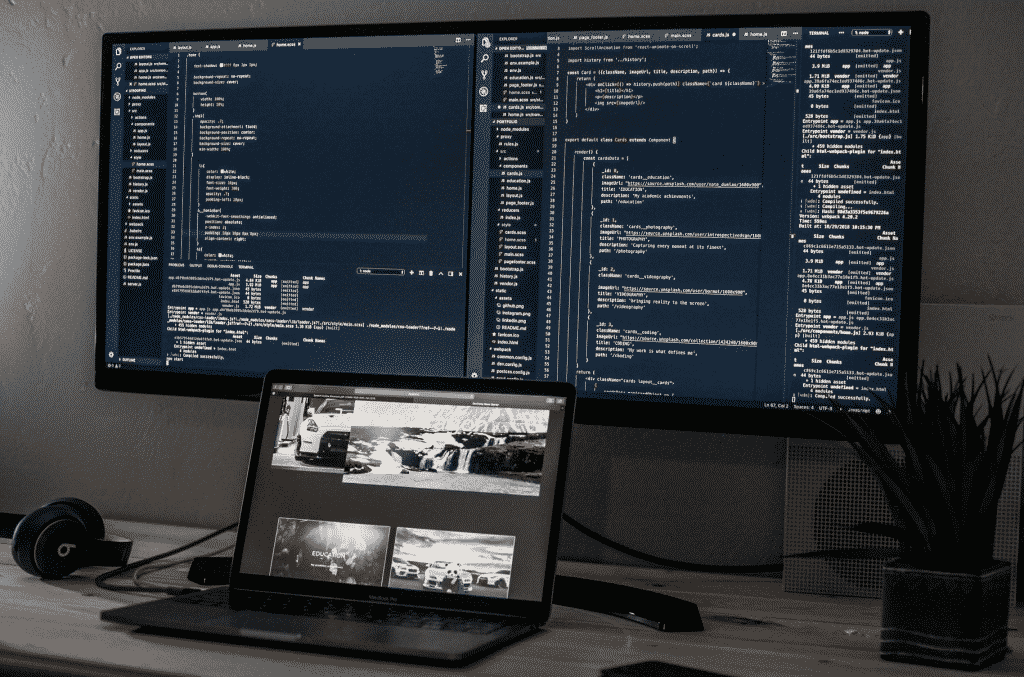The thought about compiling your first portfolio must be both exciting and creepy, right? You might want to add all the stuff you’ve completed or, vice versa, feel lost about what to include. Perfectionism may add one more issue, but you should admit that there are no perfect projects, especially if that’s a team one. So, concentrate and go through the tips below to know what points must not be missed.

What Jobs Require Portfolios?
Obviously, a portfolio is not something all professionals need. Yet, it’s a must if you’re one of the people below:
- architect;
- visual artist;
- food decorator;
- web developer;
- web/interior/graphic designer;
- writer or editor;
- content manager;
- photographer, etc.
Add a Short Introduction
If your portfolio is filled with text documents, you will probably not be able to structure it as in the case with thematic photoshoots. The same can be relevant if you’re going to show your works in the area of web development. Most probably, there will be links to repositories, so make sure to introduce the bulk of your projects for the employer not to stare at a pack of URLs on a blank page.
Meanwhile, visual items can be grouped to represent a particular theme, style, or genre. The groups should also contain a couple of introductory sentences to give the recruiter or the employer a general explanation of what they are going to see.
Whether it’s a photo gallery or a repository on GitHub, make sure to mention specific details in a concise manner:
- technologies/techniques/methods applied;
- tools and equipment used in the process;
- whether the project was completed by you alone or a team;
- timeframes of completion.
Double-Check Your Projects
Making a blunder just because of your overconfidence can lead to serious regrets. So, make sure you reread and rewatch all the texts and materials you’re going to include. Nothing is perfect, but you still need to follow grammar rules (especially if your job is connected to writing), observe the good tone of coding, etc.
Take, for instance, an academic writer who promises you fast essay writing and a completed assignment strictly by the deadline or even earlier. What is it that will assure you it’s true? Obviously, first of all, it’s company policy about refunds and payments. However, you will still need some evidence about this particular writer.
In this case, you can go through the website reviews on this expert, request samples, or order one to check how the writer will manage the test assignment.
So, what will you look at in the samples? It will probably not be enough for you to simply read a passage to make sure this writer would be a good choice. You will need to check all the aspects of essay writing like critical analysis, academic word choice, grammar, and even format, right?
It’s logical because a good format doesn’t equal good quality, just as good grammar doesn’t equal an informative essay. So, the sample will have to showcase a decent level of work in all aspects.
Your portfolio works must follow the same rules and be transparent enough for the employer to be 100% sure they should choose you. The areas of possible mistakes mentioned above mostly occur in technical fields of expertise. Yet, even visual artists should take care of grammatically correct explanations and names.
Make Your Portfolio Diverse
No one wants to look through a number of shots of the same scenery that differ only in lighting. Not all your Instagram subscribers will be pleased to do it, leave alone the employer who doesn’t have time for a vast portfolio full of identical material.
To make the list of your projects catchy, avoid adding those that represent similar skills. Choose the ones that differ in techniques and have different styles or subject areas. In case you have very few projects to include, at least mix them.
If you’re torn between two great – yet, similar – works of yours, ask your friends for advice; they can help you choose.

Do Not Add All the Projects You Have
Unless you’re new to the field and can’t cherrypick your works, set limits for the number of those before you even start creating the portfolio. What’s more important, you should also come up with the criteria of quality and complexity.
You may have written a good essay as a freshman, but it doesn’t always mean that you should use it for professional purposes after graduation. Remember that even if you got that high grade, you were still evaluated as a freshman. The expectations were lower, and you managed to meet them. Yet, you probably created something much better since then.
Use the best of your texts, pictures, or websites. And don’t, please, don’t just fill up your portfolio with everything you can find on your computer. Quantity doesn’t equal quality.
Connect It to Your Resume
Portfolios go hand-in-hand with resumes. If you catch the employer’s attention with your skills or experience, they will look further to see the proof. Whatever technical skills you list in your resume, the words won’t matter unless your portfolio proves you can do this and that.
Therefore, before sending your application, double-check whether the resume corresponds to the projects you included. You may miss some crucial ones or, vice versa, realize that you didn’t actually master a particular skill you tried to boast of. Remove it to avoid unnecessary troubles during your interview later.
Summing Up
Choosing the top works from your projects can be a hard thing to do, whether you have a lot of those or few. Still, keep in mind that even a couple of works can influence the employer’s decision significantly. Just stick to the principle of quality instead of quantity. Even if the job you get doesn’t meet your expectations because of your lack of experience, remember that this is the opportunity to gain it. Good luck!
